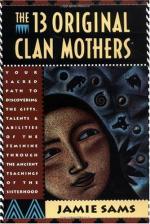|
This section contains 361 words (approx. 2 pages at 300 words per page) |

|
New England and Chesapeake Bay Colonies
Summary: Describes the early American New England and Chesapeake Bay colonies. Examines how each colony evolved into two distinct societies despite having been settled by the same sort of pilgrims. Details how the colonies' influence is still felt today.
In the 1700's New England and the Chesapeake Bay areas had evolved into two distinct societies, mainly due to the motives of settlement, the social composition of the settlements and the varying forms of colonial government.
Colonists moved to different parts of America for different reasons. Some moved to New England to escape religious persecution or because they had lost their jobs in England and needed a place to start over again. On the other hand, most Chesapeake colonists moved for more financial reasons, such as gold or as an attempt to find the "West Passage."
Socially both colonies were more family oriented than their southern brothers. However, New England's families tended to be much larger in number and in generations that the Chesapeake area. Some of New England's major social points were the fact that widows had above average property rights for the time and that marriage...
|
This section contains 361 words (approx. 2 pages at 300 words per page) |

|


